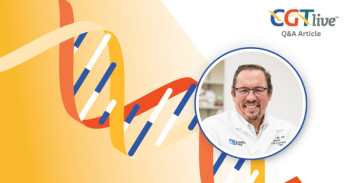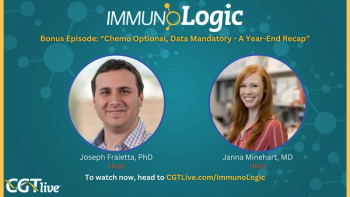
Collaboration and Expertise Is Crucial for Cell and Gene Therapy Clinical Trial Success
Parexel cell and gene therapy director Izaskun Elorza, MD, shares key factors for industry to consider as this emerging field becomes more prominent.
Gene therapy research began as early as the 1960s, with the first patient successfully treated in the 1990s: A 4-year-old with lethal immunodeficiency due to adenosine deaminase (ADA) deficiency was provided with a healthy ADA gene. This success led to an increase in ongoing clinical trials and the FDA regulations for gene therapy in 1993. However, in 1999, a patient enrolled in a clinical trial with an adenovirus-based GT developed fatal multi-organ system failure triggered by a severe immune reaction. The clinical trial was halted and a full investigation conducted. From this tragedy, researchers learned many important lessons. Today, more than 20 years later, an adeno-associated virus (AAV) represents the "gold standard" platform for delivery of gene therapy. The evolution of gene therapy demonstrates how exciting it can be and the potential impact it may have on patients’ lives, yet at the same time, we have seen how such therapy can be potentially dangerous. Any serious adverse event can have a profound impact on the success of a study and can potentially halt a project that could, if safely conducted, save hundreds or even thousands of lives.
Cell and Gene Therapy Clinical Trials Can Be Complex
More than 1000 companies are developing gene therapies and the FDA is predicted to approve more than 20 gene therapies per year by 2025. Gene therapy is an umbrella often used for both cell and gene therapies, with the FDA defining gene therapy products as "all products that mediate their effects by transcription and/or translation of transferred genetic material, and/or integrating into the host genome." In this definition, there are 2 distinct areas of therapy: immunotherapy using immune gene-modified cells to destroy cancer cells, and the introduction of a functional, healthy gene to cure diseases caused by the lack or dysfunction of a single gene. Currently, the FDA lists 22 approved cellular and gene therapy products.1 Examples of approved products include established CAR-T therapies for hematologic malignancies such as Yescarta, Tecartus, Abecma, and Kymriah or the single gene replacement therapy for pediatric spinal muscular atrophy, Zolgensma.
There are several potential issues in this therapeutic space: patients may have to undergo several rounds of gene therapy; the risk of stimulating the immune system in a way that reduces effectiveness; introduction of viruses may result in potential toxicity, with immune and inflammatory responses; and the possibility of inducing a tumor by insertional mutagenesis if the DNA is integrated into the wrong place in the genome. One way to minimize the risk of secondary cancer is through CRISPR gene editing technology, which can selectively repair the DNA of the defective gene in patients’ cells. A growing number of clinical trials are beginning to test this technique. The first clinical data to support the efficacy and safety of an in-vivo CRISPR gene editing has been recently published.2 On the other side, if we think about the toxicity and efficacy of traditional treatments for cancer and the lack of curative modalities for genetic disorders, gene therapy can potentially offer a safer and more efficacious therapy for these patients.
Collaboration Is Key to Success
In this complex gene therapy world, collaboration is shown as the best way to tackle daily challenges. Any plan to develop a new investigational drug must combine a biotech company's expertise in discovering and manufacturing a safe and efficacious product; patients and investigators who understand the reality of living with and, hopefully, successfully treating their disease; and the experience and knowledge of global clinical research organizations (CROs). The responsibility of the CRO is enormous because it must anticipate and provide solutions to problems that arise during the clinical development pathway, while at the same time, finding an equilibrium between different interests and needs of the various stakeholders, facing high degrees of complexity and uncertainty. The solutions implemented for those early clinical trials will also form the basis for meeting future commercialization needs for the product.
Patients with refractory malignant disease and those who suffer from genetic disorders represent a vulnerable population. Clinical trials with gene therapy products must follow strict ethical rules. The trials must start with the patient in mind and should be inclusive during early development stages to avoid exclusion or underrepresentation of populations based on age, gender, race, or ethnic background. Investigators must explain to their patients that clinical trials represent the most efficient path to development of new therapies and informing them about the rationale and progress of each trial will help gain their trust, resulting in improved recruitment and retention with greater study compliance, especially for cell and gene therapy trials.
The complexity of gene therapy clinical trials, however, may make it difficult for patients to take advantage of these life-changing therapies. The highlighted inequities in health care and access to clinical trials are even more prominent for patients with rare diseases. The urgency of the global COVID-19 pandemic has pushed decentralized trials to the center stage, with CROs like Parexel positively affecting patient access to clinical trials with mitigation of practical and financial barriers.
Investigators are aware of the possibility of severe complications related to gene therapies, and in general, these trials are done in select centers, mainly in the US and Europe. Companies that understand the fragility of early-phase gene therapy trials, the best design protocols for a small number of subjects, and the need to manufacture products in a laborious manner, also want to enroll patients at the best-recognized and most experienced centers. Expediting successful delivery of a gene therapy clinical trial requires a highly trained study team, from feasibility and product manufacture, to shipment logistics, on-site drug administration, careful patient monitoring, and long term follow-up (up to 15 years). Biotech companies often need the organizational support provided by an experienced CRO to deliver these difficult-to-make, short-lived, complex treatments at the scale required to meet the needs of patients.
Gene therapy developers need to consider the complex logistics and regulations required to deliver their therapies to the clinic, particularly autologous therapies. A tight coordination of services is required to move from the patient to the clinician, to the apheresis collection, then to the manufacturing site, the complex manufacturing process, and back to the patient. It is more complex as autologous therapy involves a fresh product that requires strict protocols to be shipped and delivered at the right time. Allogeneic manufacturing products are potentially less complicated, providing an off-the-shelf treatment when the patient needs it. The induced pluripotent stem cell therapy field is continually growing with a broad allogeneic cell therapy pipeline undergoing active development.
The Future of Cell and Gene Therapy Clinical Research
The excitement and the hope around gene therapies remains high, with the industry still facing many manufacturing, logistical, strategic, and economic challenges. In 2012, the European Medicines Agency (EMA) approved the first gene therapy, Glybera, to treat patients with lipoprotein lipase deficiency. Due to the lack of demand for this product, the company did not apply for a renewal of the marketing authorization. The withdrawal of Glybera from the European market is proof that gene therapies must be made accessible to the patients who need it, and that includes resolving issues related to pricing. The basement of gene therapy is that a single treatment can cure a lifelong serious disease. A rational price would be determined by the cost-effectiveness of the therapy, taking into account the improvement of the patient's quality of life. A long-term analysis showed that Glybera was associated with a lower frequency and severity of pancreatitis events, and a consequent overall reduction in health care resource use up to 6 years post-treatment.3 The policy for reimbursement is of great importance and discussion among all stakeholders will be required to facilitate bringing gene therapies to patients with rare diseases while making the pricing affordable to health care providers and society in the long term.
Gene therapy is a highly regulated therapy area. Support from a team of experts with robust and relevant experience, as well as early interaction with regulatory authorities, is critical to operationalizing a successful gene therapy clinical trial. There are increased efforts to find solutions that work for individual patients that could be used on a significantly larger scale in the real-world setting. It is an exciting time for gene therapy development, but we must give our best coordinated effort to ensure that these products are appropriately tested, and if proven efficacious and safe, made available to patients worldwide.
REFERENCES
1. Approved Cellular and Gene Therapy Products. US Food and Drug Administration website. Updated June 15, 2021. Accessed August 11, 2021. https://www.fda.gov/vaccines-blood-biologics/cellular-gene-therapy-products/approved-cellular-and-gene-therapy-products
2. Gillmore JD, Gane E, Taubel J, et al. CRISPR-Cas9 in vivo gene editing for transthyretin amyloidosis. N Engl J Med. 2021;385(6):493-502. doi:10.1056/NEJMoa2107454
3. Gaudet D, Stroes ES, Méthot J, et al. Long-term retrospective analysis of gene therapy with alipogene tiparvovec and its effect on lipoprotein lipase deficiency-induced pancreatitis. Hum Gene Ther. 2016;27(11):916-925. doi:10.1089/hum.2015.158
Newsletter
Stay at the forefront of cutting-edge science with CGT—your direct line to expert insights, breakthrough data, and real-time coverage of the latest advancements in cell and gene therapy.





































